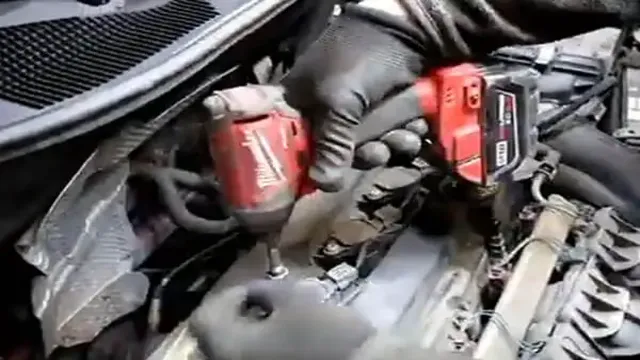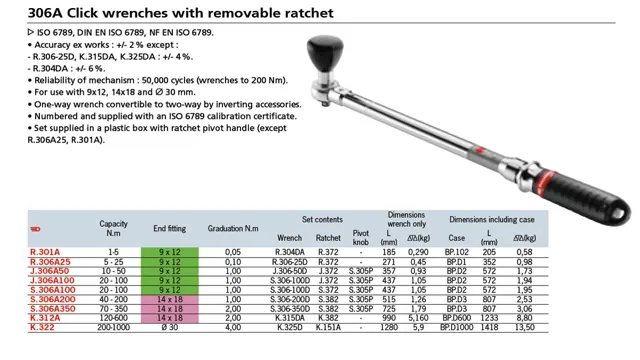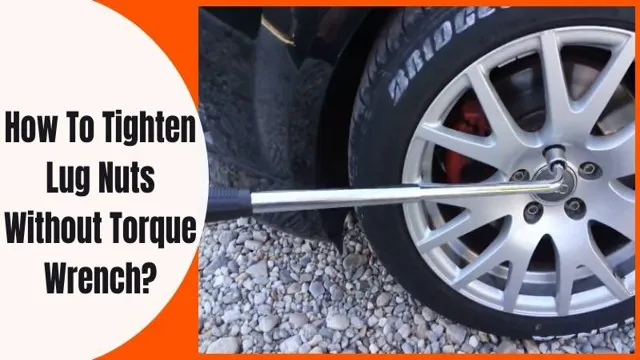How Tight to Tighten Spark Plugs without Torque Wrench: A Comprehensive Guide

Spark plugs are one of the most important components of your vehicle’s engine, as they help provide the spark that ignites the fuel and air mixture inside the cylinder. While it is recommended to tighten the spark plugs to a specific torque setting, not every car owner has access to a torque wrench. So, what do you do if you need to tighten your spark plugs without a torque wrench? Fear not, there are still ways to ensure your spark plugs are tightened properly without a torque wrench.
In this blog post, we will explore some tips and tricks for tightening spark plugs without a torque wrench to help keep your engine running smoothly. Let’s dive in!
Why is Properly Tightening Spark Plugs Important?
When it comes to properly maintaining your vehicle, tightening your spark plugs is a crucial component. Ongoing maintenance is essential to ensure that you are getting the best performance out of your engine. Ensuring that your spark plugs are tightened correctly is one of the most critical steps in the process.
Improperly tightened spark plugs can cause a wide range of issues from damaged threads to poor engine performance. While it is recommended to use a torque wrench to tighten the spark plugs, not everyone has access to one. If this is the case, tightening by hand is acceptable, but it must be done precisely.
Typically, you should tighten your spark plugs until you can no longer turn them by hand and then give them a small turn very gently with a ratcheting wrench. It may take some practice to find the appropriate level of tightness, but it is essential to ensure that the spark plugs are secure and that they do not back out while your engine is running. Taking the extra time to make sure your spark plugs are tightened properly can save you time and money down the road.
Preventing Over-Tightening
Properly tightening spark plugs is crucial to ensure your vehicle runs smoothly and efficiently. Over-tightening can cause permanent damage to the threads in the cylinder head, risking the integrity of the entire engine. On the other hand, under-tightening can cause the spark plug to loosen, which could lead to a loss of compression and misfiring.
This is why it’s important to use a torque wrench to ensure that the spark plugs are tightened to the manufacturer’s specification. It’s better to be safe than sorry, as over-tightening can lead to costly repairs. Remember to regularly check the torque on your spark plugs every time you replace them.
By taking the necessary precautions, you’ll prolong the life of your engine and save yourself a lot of headaches and expenses in the long run.

Preventing Under-Tightening
Properly tightening spark plugs is crucial in preventing under-tightening because this can lead to a host of problems. Not only can it result in lost power and fuel efficiency, but it can also cause serious engine damage. When a spark plug is not tightened to the specified torque, it can vibrate loose during operation, leading to misfires and a whole range of other issues.
However, over-tightening can also be a problem, as this can damage the threads or even break off the spark plug. That’s why it’s essential to follow the manufacturer’s recommendations for torque settings and to use a torque wrench when installing spark plugs. By taking the time to properly tighten your spark plugs, you can ensure that your engine runs smoothly and efficiently, while avoiding costly repairs down the line.
So, don’t cut corners when it comes to spark plug maintenance; make sure you’re doing it right!
Tools Needed to Tighten Spark Plugs
If you’re looking to tighten spark plugs without the use of a torque wrench, there are a few tools you’ll need to get the job done right. First and foremost, you’ll need a socket wrench or spark plug wrench that fits your specific spark plug size. This will make it much easier to tighten the spark plug to the appropriate level of tightness.
You may also want to invest in a spark plug gap gauge, which will help ensure that the gap between the electrode and the spark plug is set to the proper distance. Additionally, a feeler gauge can be helpful for checking the tightness of the spark plug once it’s installed. With these tools at your disposal, you can confidently tighten your spark plugs to the correct level of tightness, even without a torque wrench.
Remember, it’s important to tighten the spark plug snugly, but not to overtighten it, as this can lead to damage. By using these tools and being mindful of the appropriate level of tightness, you can keep your vehicle running smoothly and efficiently.
Socket Wrench
If you’re getting ready to change your spark plugs, it’s essential to have the right tools to ensure a successful job. One of the tools you’ll need to tighten your spark plugs properly is a socket wrench. This tool can make the job much easier because it allows you to reach the spark plug in a deep, narrow space that many other tools can’t access.
A socket wrench also gives you more control when tightening the spark plug, which helps prevent over-tightening and damage to the engine. Make sure you choose the right size socket for your spark plug and always use a torque wrench to ensure that you’re tightening the spark plug to the manufacturer’s recommended torque setting. With the right tools and some basic knowledge, changing your spark plugs can be a straightforward task that you can do yourself.
Spark Plug Socket
If you’re looking to change your spark plugs, then you’ll need a specific tool to make sure they’re tightened securely. That tool is a spark plug socket. This is a special socket that has been designed specifically to fit over the end of a spark plug, allowing you to screw it in or out with ease.
Without this specialized socket, it can be difficult to get a good grip on the spark plug and ensure that it’s properly tightened. A spark plug socket typically comes in a range of sizes to fit different spark plugs, so make sure you have the right size for your vehicle. With the proper socket in hand, you’ll be able to ensure that your spark plugs are tightened to the correct torque specifications, which is crucial for optimal engine performance.
So, before you get started on your next spark plug change, make sure you have a spark plug socket handy to get the job done right.
Extension Bar
When it comes to tightening spark plugs, having the right tools can make all the difference in achieving a secure and reliable connection. One essential tool is an extension bar, which attaches to the ratchet and allows for better reach and maneuverability. The extension bar is especially useful for spark plugs situated in hard-to-reach areas such as those located near the firewall or under the engine.
It enables you to access the plug from a different angle, making it easier to turn the socket wrench and tighten the plug securely without damaging the threads or the ceramic insulator. Overall, using an extension bar saves time and ensures that your spark plugs are tightened properly, which leads to optimal engine performance and durability.
Steps to Tighten Spark Plugs without a Torque Wrench
If you don’t have a torque wrench handy, tightening spark plugs can seem like a daunting task. Fortunately, you don’t need a torque wrench to get the job done. Start by hand tightening the spark plug, turning it until it won’t turn anymore.
From there, use a spark plug socket and a ratchet to turn the plug an additional 1/16th to 1/8th of a turn. This should provide enough tightening to secure the spark plug in place without over-tightening it. It’s important not to overtighten the spark plug as it could potentially damage the threads and make it difficult to remove in the future.
Additionally, under-tightening the spark plug could lead to misfires and other engine issues. If you’re unsure, it’s always a good idea to consult your vehicle’s owner manual or a professional mechanic to ensure that you’re tightening the spark plugs appropriately. With a little care and effort, tightening spark plugs without a torque wrench is possible.
Step 1: Loosen the Old Spark Plug
When it comes to changing spark plugs, many people may worry about not having a torque wrench. But don’t worry, it’s still possible to tighten your spark plugs without one. The first step is to loosen the old spark plug.
You can do this by placing a wrench over the spark plug and turning counterclockwise. It’s important to be gentle here and avoid forcing anything, as you don’t want to damage the threads and make the process even tougher. Once the old spark plug is loose enough to be removed by hand, go ahead and carefully take it out.
Make sure to inspect both the plug and the hole for any signs of damage or wear. This will help you determine if there are any underlying issues with your engine that need to be addressed before installing the new spark plug. With the old plug out of the way, you can move on to the next step of installing your new spark plug.
Remember, while a torque wrench can be helpful, it’s not always necessary to get the job done right.
Step 2: Hand-Tighten the New Spark Plug
After removing the old spark plug, the next step in tightening a new spark plug without a torque wrench is to hand-tighten it. This means using your fingers to screw in the new spark plug as far as it will go. It’s important not to use any tools at this stage as you could overtighten the plug and damage the threads in the engine cylinder head.
Make sure you align the new spark plug correctly with the threads by hand before tightening it. Once the spark plug is hand-tight, you can use a spark plug wrench to give it a final tighten, ensuring it’s firm but not too tight. However, don’t apply too much force to the point of potentially breaking the porcelain insulator of the spark plug.
Tightening your spark plugs without a torque wrench requires a gentle touch and a bit of patience. Remember to always refer to your manufacturer’s specifications for proper torque settings if you’re unsure.
Step 3: Tighten the Spark Plug 1/16th to 1/8th of a Turn Past Hand-Tight
Tighten Spark Plug Without Torque Wrench Tightening the spark plug without a torque wrench might seem daunting, but it is an easy DIY task that can be done without any hassle. The third step of tightening the spark plug requires you to do it by hand, and then make a 1/16th to 1/8th turn more. You don’t want to overtighten the spark plug, as that can damage the threads.
This additional 1/16th to 1/8th turn will ensure that the spark plug is properly seated and secured, and prevent it from coming loose while driving. When tightening the spark plug by hand, you should always wear gloves and make sure that the engine is completely cool. This will help you get a better grip on the spark plug and prevent any burns from the hot engine.
Once you have placed the spark plug into the socket, you can gently twist it clockwise until it is firmly seated. Then, using your hand only, turn it an extra 1/16th to 1/8th of a turn until the spark plug is snugly tightened. Here’s a pro tip: If you have an old or worn-out spark plug, the threads might be damaged or covered with build-up.
Therefore, it is essential to remove any debris before installing the new plug. You can use a wire brush or a compressed air tool to clean the threads before attaching the spark plug. This will aid in having a more secure fit, and it will also prevent the plug from seizing or damaging the cylinder head.
In conclusion, tightening the spark plug without a torque wrench is an easy and straightforward DIY task. By following these simple steps and making that extra 1/16th to 1/8th turn, you can ensure that the spark plug is safely installed, and it will provide you with reliable service. Remember to always wear gloves, and make sure that the engine is cool before starting.
By doing so, you can prolong the life of your engine and enjoy a smooth ride.
Step 4: Recheck Tightness After Running the Engine
After tightening your spark plugs, it’s crucial you recheck their tightness after running the engine. This step is often overlooked, but it’s essential to ensure that the spark plugs are secure and tightly fastened. Simply let the engine run for a minute or two, then turn it off and let it cool down for a few minutes.
Next, use a spark plug wrench to double-check the tightness of each plug. If any of them feel loose, give them another quarter turn until they’re secure. Remember, it’s better to be sure the spark plugs are tight, or they may get loose over time, causing issues with your engine’s performance.
So avoid any future trouble by taking a few minutes to recheck the tightness after running the engine.
Conclusion
Tightening spark plugs without a torque wrench is like trying to calculate Pi without a calculator. It requires a delicate balance of feel, intuition, and experience to get it just right. But fear not, with a little practice, you too can become a master of the spark plug torque game.
Just remember, when it comes to tightening spark plugs, it’s better to err on the side of caution and slightly under-tighten than to over-tighten and risk damaging the threads or even worse, snapping the plug. So don’t be afraid to get a little hands-on with your engine, and let your fingers do the talking when torquing those sparks!”
FAQs
Can I tighten spark plugs without a torque wrench?
Yes, you can tighten spark plugs without a torque wrench, but you need to be careful not to overtighten them.
How can I tell if my spark plugs are too tight?
If your spark plugs are too tight, you may damage the threads in the cylinder head or break the spark plug. You may also experience engine misfires or reduced performance.
What is the recommended tightening torque for spark plugs?
The recommended tightening torque for spark plugs varies depending on the make and model of your vehicle. Consult your owner’s manual or a trusted mechanic for the correct torque specifications.
Can I use anti-seize on spark plug threads?
Yes, you can use anti-seize on spark plug threads, but be careful not to get it on the electrodes or insulator.
What happens if I undertighten my spark plugs?
If your spark plugs are undertightened, they may not make proper electrical contact, which can result in engine misfires or reduced performance.
Can I reuse old spark plugs?
It’s not recommended to reuse old spark plugs, as they may not function properly and can cause damage to your engine.
How often should I replace my spark plugs?
The recommended interval for replacing spark plugs varies depending on the make and model of your vehicle. Typically, it’s between 30,000 and 100,000 miles. Consult your owner’s manual or a trusted mechanic for specific recommendations.



